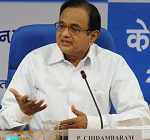At a press conference following the release of the Economic Survey yesterday, India’s Chief Economic Advisor Raghuram Rajan delivering his maiden survey report said that economic forecasting is an art. He conceded that forecasting growth around turning points is extremely difficult and hence preferred to use a wider range in his projections.
For journalists at the press conference hoping for some precise forecasts, this was a tad disappointing, because Rajan is particularly famous for his prophetic paper in 2005 on the risks posed by securitisation in the U.S. well before the Global Financial Crisis unfolded.
If we were to shortlist the countdown to Budget 2013 to one variable, it has been the Fiscal Deficit to GDP ratio. Economists and macro analysts have been obsessing over this one variable drawing out various alternate scenarios. This comes as no surprise particularly given that rating agencies were worried by the fiscal gap and were threatening a sovereign downgrade. If we rewind to the financial year 2008-09, India had been on track to achieve the targets set under the Fiscal Responsibility and Budget Management Act, 2003 until the Global Financial Crisis unfolded in 2008. In 2008-09 the fiscal deficit (after adjusting for off-balance sheet bonds issued against subsidies) stood at 7.3% versus the budgeted target of 2.5%. That effectively was the cost of our fiscal stimulus. It has been a tough journey to reign in fiscal deficit since then.
The Finance Minster knowing fully well what the markets wanted ensured that he did not spring any negative surprises by forecasting a fiscal deficit of 4.8% for 2013-14 (versus 5.2% the previous year). While this might give the impression of being a step towards fiscal prudence, a closer look at the math reveals a different story.
As trained Accountants, we have learnt that sale of Assets from the Balance Sheet are one-off or non-recurring items. It is interesting that if we add back the estimates from Sale of Spectrum and Divestment of Government Companies (both non-recurring in our view), the ‘real’ Fiscal Deficit/GDP ratio for 2013-14 shows no improvement over the previous year. (See Display 1)

Tax revenue growth of 19% for 2013-14 appears to be an uphill task, despite higher surcharges and a nominal GDP growth assumption of 13.4%. On an already elevated earnings growth expectation of ~15% for 2013-14, this additional surcharge will create a 2% headwind, ceterus paribus.
On the expenditure side, the total Government expenditure is budgeted to grow by 16.4% in 2013-14, well ahead of 9.7% in the previous year. Within the overall expenditure growth, capital expenditure is budgeted to grow 38% and revenue expenditure by 14%. It is interesting to note that last year too the Finance Minister had budgeted a higher growth for capital expenditure over revenue expenditure (29% versus 12%) but eventually ended up with a growth of 10% for revenue and 6% for capital expenditure. As we all know the skew towards revenue expenditure is not productive. We need to wait and watch how 2013-14 will unfold on this count.
While most commentators may not call this a populist Budget, we think that the growth in Expenditure (up 16.4%) should be seen in the context of Nominal GDP growth (up 13.4%). This will be the first time after three years that Expenditure growth will outpace Nominal GDP growth. (See Display 2)

We continue to wear our Accountant’s hat and want to see what the recurring Revenue and Expenditure trends look like and use Tax/GDP and Expenditure/GDP as proxies for this. The Finance Minister alluded in his speech that we need to reclaim our peak Tax/GDP ratio of 12%, achieved in 2007-08. The gap between Tax and Expenditure to GDP was 1.7% in 2007-08 but that has widened to 3.7% in 2013-14 (see Display 3), with the Tax ratio decelerating and Expenditure ratio increasing by 100 basis points each. While the slowdown has hit the revenue side of the equation, commensurate reigning in of expenditure hasn’t happened.

In the words of the Finance Minister “… the last day of February is another day in the life of the nation. We pause today, to reflect on the past and the future, and we shall resume our work tomorrow”. Despite all the hoardings around Mumbai city, vying to bill this as a “Make or break budget”, we concur that February 28 is not the only day in the calendar for action. However, for markets that had come to rely on the “Chidambaram put” especially over the last six months, this could be a reality check.
Amay Hattangadi is Executive Director, Portfolio Manager, Morgan Stanley Growth Fund and Member, Executive Board, Gateway House: Indian Council on Global Relations.
Swanand Kelkar is Vice President, Portfolio Manager, Morgan Stanley Growth Fund.
The views expressed are personal, and do not reflect those of Morgan Stanley Investment Management.
This article was exclusively written for Gateway House: Indian Council on Global Relations. You can read more exclusive content here.
For interview requests with the author, or for permission to republish, please contact outreach@gatewayhouse.in.
© Copyright 2013 Gateway House: Indian Council on Global Relations. All rights reserved. Any unauthorized copying or reproduction is strictly prohibited


